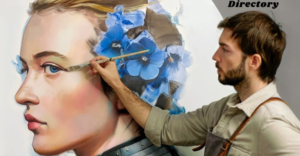
Blueface House, born Johnathan Jamall Porter, has made headlines over the years for his music and public controversies. Yet, his residence, popularly referred to as the “Blueface House,” has become a cultural phenomenon on its own, stirring up discussions, fan fascination, and even criticism across social media. Located in Los Angeles, this house serves as both a personal residence and a space for hosting extravagant parties, producing reality-style content, and interacting with fans and critics alike.
This article takes a deep dive into the elements that have made Blueface’s home such an internet sensation. We’ll look at the house’s role in Blueface’s career, its unique features, and the impact it has had on fans and social media.
A Reality Show-Like Environment
One of the reasons why the Blueface House has become so popular is due to its unconventional role as a live-in reality show set. In 2020, Blueface introduced his self-produced reality show, Blue Girls Club, where several women lived in his mansion and competed for his attention in various on-camera challenges. The idea drew parallels to shows like The Bachelor or Flavor of Love, but with a raw, unfiltered quality that made it even more captivating—and controversial.
This setup sparked conversations on platforms like Instagram, YouTube, and OnlyFans, where he posted episodes of the show. Each season included physical and verbal altercations among the cast members, and it was common to see Blueface himself getting involved in the drama. The Blueface House, therefore, became an unofficial emblem of chaos and reality-show intensity, a setting where fans could watch daily events unfold in real-time or edited episodes.
A Hub for Partying and Musical Events
Blueface’s home also gained a reputation for being a party hotspot. Frequent live streams and social media posts captured countless gatherings at the mansion, featuring celebrities, fans, friends, and influencers who joined the rapper for events that ranged from pool parties to impromptu concerts. The house’s pool area, backyard, and spacious living quarters provided ample room for these gatherings, which have often been marked by loud music, dancing, and social media antics.
These parties aren’t just events—they’re publicity tools. By sharing the events online, Blueface attracts attention, expanding his reach and reinforcing his presence in popular culture. Videos from these parties have gone viral on platforms like TikTok, where snippets of the parties’ highlights—and sometimes their controversies—add to the house’s mythos.
The Interior: A Look at the Aesthetic of the Blueface House
Visually, the Blueface House reflects the rapper’s eccentric style. From the walls adorned with Blueface’s signature blue color to custom-designed rooms featuring extravagant furniture, every corner of the house aligns with Blueface’s distinctive aesthetic. Some notable features that fans often comment on include:
The Blue Room
This room has become iconic, styled with neon lights, luxurious furnishings, and blue-themed decor that nods to Blueface’s name and brand.
Music Studio
Blueface, like many rappers, has an in-house recording studio. This allows him to create and produce music in the comfort of his own home, often collaborating with other artists who visit the mansion. The studio is sometimes featured in live streams and videos, giving fans a behind-the-scenes look at his music-making process.
Murals and Graffiti
Artworks throughout the house reflect both his personality and the culture he embraces. Various murals display imagery related to his musical career and life journey.
Pool and Outdoor Lounge Area
A significant part of the Blueface House appeal comes from the outdoor space. The pool area often appears in his videos and parties, and it’s a popular spot for fan engagement.
Controversies and Criticisms Surrounding the Blueface House
With all the attention the Blueface House garners, controversy is never far behind. Several incidents, particularly from his Blue Girls Club reality series, have attracted negative attention, raising questions about the treatment of cast members and the appropriateness of certain content. Critics argue that the series encourages toxic behavior and sometimes exploits the young women involved. Physical altercations and explicit language often feature heavily, giving the content a confrontational edge that some viewers find troubling.
In addition, the constant social media exposure has raised concerns about privacy and the boundaries between Blueface’s public persona and his private life. For many fans, the house seems to represent a lifestyle of unrestricted access and entertainment, but critics often question the effect of this environment on Blueface’s well-being and that of those involved.
The Business Model: Leveraging the House for Content and Revenue
Beyond its status as a social hub and reality show set, the Blueface House has become an economic asset for Blueface himself. Through platforms like OnlyFans, Blueface capitalizes on the footage filmed within his home, charging fans for exclusive access to behind-the-scenes moments and episodes of Blue Girls Club. This approach has proven profitable, allowing Blueface to turn his personal life and interactions within the house into monetizable content.
By merging his residence with his brand, Blueface effectively created a self-sustaining ecosystem where fans’ attention translates into direct revenue. The house has become both a personal space and a business venture that enhances his brand visibility and creates a steady stream of income.
The Impact on Social Media Culture
In many ways, the Blueface House symbolizes a new era of influencer culture, where traditional boundaries between personal life and entertainment are blurred. By inviting the public into his home, Blueface gives fans a sense of intimacy, which increases their loyalty and engagement with his content. This constant exposure, however, also puts the rapper under intense public scrutiny, with every action inside the house becoming fair game for online commentary and critique.
The phenomenon also speaks to a broader trend in social media culture, where entertainers and influencers leverage their personal spaces to create unique content. It reflects how celebrity homes can become brands in themselves, serving as backdrops for content that caters to fans’ curiosity and desire for closeness to their favorite figures.
Conclusion
The Blueface House is more than just a mansion; it’s a complex cultural symbol that intersects reality TV, influencer culture, and modern hip-hop lifestyle. While it attracts criticism and controversy, the house also serves as an innovative way for Blueface to connect with fans and monetize his personal life. It represents the evolving dynamics between celebrities and their audiences, showing how private spaces can be transformed into stages for public entertainment.
As Blueface continues to utilize the house as a content hub, its legacy will likely evolve with him. Whether or not you agree with his lifestyle or approach, it’s hard to deny that the Blueface House has become a fascinating artifact of internet culture in the 2020s.
Also Read More About



